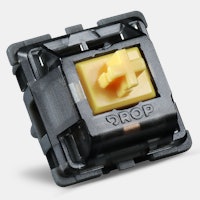Figure 1: Are these even long pole? I don't know, but they're really serving 'long pole vibes'. Something tells me I should probably be a little more rigorous about them than that though..
Honestly, I’m a tad bit compelled to kick off this article by once again hammering on the meme that everyone newer to the hobby loves to repeat in that “all linears are basically the same”. While my aptly named last article from Drop titled ‘Not All Linears Are The Same!’ likely did a good enough job of dissuading most readers of that age old falsehood, this one may help put it to rest for the remaining few of you who weren’t so convinced. Don’t worry to all of you reading this who don’t care that much for linear switches, either, as the idea of ‘long pole’ switches can also apply to tactiles too! Once an odd design quirk developed to help emphasize sharp, forceful, and pointed bottoming out sensations in BSUN and Tecsee switches back in 2020, ‘long stem poles’ have since morphed into a surprisingly large amount of the switch market. Especially prevalent in linears in 2024, switches from nearly every single manufacturer out there new and old alike have adopted not only this stem feature but hefty marketing points which revolve around it. However, I recognize that quite a few people just getting into keyboards for the first time probably don’t have the best clue of what ‘long stem poles’ are even referencing, much less what they actually do to change the feeling of a switch. So, hopefully this article will help distinguish what these stems are and what they both do and don’t do for your future keyboard build should you choose to pick some up!
Figure 2: Labeled stems from Gateron Deepping switches.
To start off at the absolute basics, it’s probably a bit important to just identify what a stem pole even is. As can be seen above in Figure 2, the stem pole is the long, thin portion of the stem that sticks straight down from the keycap mounting cross and touches the bottom housing inside of a switch. You’ll also notice that the slider rails, which are rectangular outcroppings on the left- and right-hand sides of the stem which work with the bottom housing to keep the stem moving perfectly up and down, are also labeled in this photo. In the vast majority of switches which exist out there today, some combination of the stem pole and slider rails are what will first touch the bottom housing of a switch when you press it in all the way until it can’t be pressed anymore. In the most conventional MX-style switch design, these stems first contact the bottom housings on the pair of slider rails. However, often times in switches with longer stem poles, the stem pole is the only point of contact that the stem will have with the bottom housing when pressed in all the way. This most immediately can change the bottom out feeling of switches as the stem pole has a smaller singular surface area than the slider rails and can feel more pointy and sharp underneath the finger. As well, lengthening the stem pole so that it makes contact with the bottom housing first can also reduce how far the stem has to be pushed in to reach the bottom housing, which effectively shortens its total stem travel distance. (Shorter stem travel distances in switches are also sometimes erroneously marketed as “Speed” Switches.) Just take a look at the comparative force curve in Figure 3 below to see an example of this. Since the Wuque Studio Morandi stems have a total length of 13.21 mm which is significantly longer than the Gateron G Pro 3.0 Yellow’s stems at 12.51 mm, they only can be pushed in around 3.2 mm as opposed to the Yellow’s 4.0 mm.
Figure 3: Comparative force curve diagram between Gateron G Pro 3.0 Yellow and Wuque Studio Morandi switches.
While I have mentioned in the example above that the lengthened stem pole of the Wuque Studio Morandi switches causes them to bottom out at a shorter distance, that does not mean that all long pole stems necessarily reach bottoming out quicker than normal length stems! In spite of what the marketing for switches out there may be trying to tell you, just because the stem of a switch is long does not mean it will have a shorter travel distance to reach bottom out. The bottom out of a switch, and where it occurs in relation to the stem, is both a function of the length of the stem as well as the bottom housings. In some switches, the bottom housings are built deeper to accommodate the longer stem poles and thus they will just bottom out onto the pair of slider rails like a conventional MX-style switch design. Thus, in order to unlock the real potential of the long stems used in those switches, you will have to ‘frankenswitch’ them into other, shallower bottom housings. In fact it’s almost certain that the shortest travel distance you could achieve in an MX style switch would come from combining a super long stem of one switch with the very shallow bottom housing of another!
Now before you go out hunting down or running from those long stem poles listed out there out of love, fear, or some combination thereof, it would probably be helpful of me to be a bit specific as to what I mean by “long”. Please do keep in mind, however, that there is no community-wide accepted length that truly makes a stem pole be considered long versus short. In spite of this lack of hard and fast rule, I’ve generally held the belief that a switch’s stem is considered long if it stretches beyond 13.25 mm in total length. To date, I’ve measured the stem poles of over 500 different MX-style switches as part of one of my own projects, and found that about 295 switches in total pass that number. (Overall stem length average being ~ 13.09 mm.) As can be seen in the box and whisker plot of these measurements below, switches manufactured by Aflion, SOAI, and Haimu all tend to be quite a bit longer on average, though there is certainly no clear definitive brand which is always longer than others. While this can certainly help you narrow things down, there’s still plenty of exploration for/fear of an even longer stem pole out there that I haven’t measured quite yet!
Figure 4: Box and whisker plot of stem lengths of 509 switches organized by manufacturer.
Given the ubiquity of the ‘long stem pole’ marketing point in switches in 2024, I figured it was about time to help clean up some misunderstandings surrounding them. While not all of them will necessarily shorten up your travel time to bottom out, there are quite a few which could scratch this itch that you’re looking for in your switches. Knowing that it’s all just a bit more complex than it seems on the surface hopefully helps you make even more informed decisions when seeking out some new switches to try. As well, it may help to read some of my other articles here on Drop such as ‘Switch Marketing Terms: What to Know and What to Ignore’ or ‘The Who’s Who of Switch Manufacturers’.

























Given the ubiquity of the ‘long stem pole’ marketing point in switches in 2024, I figured it was about time to help clean up some misunderstandings surrounding them. While not all of them will necessarily shorten up your travel time to bottom out, there are quite a few which could scratch this itch that you’re looking for in your switches. Knowing that it’s all just a bit more complex than it seems on the surface hopefully helps you make even more informed decisions when seeking out some new switches to try. As well, it may help to read some of my other articles here on Drop such as ‘Switch Marketing Terms: What to Know and What to Ignore’ or ‘The Who’s Who of Switch Manufacturers’.